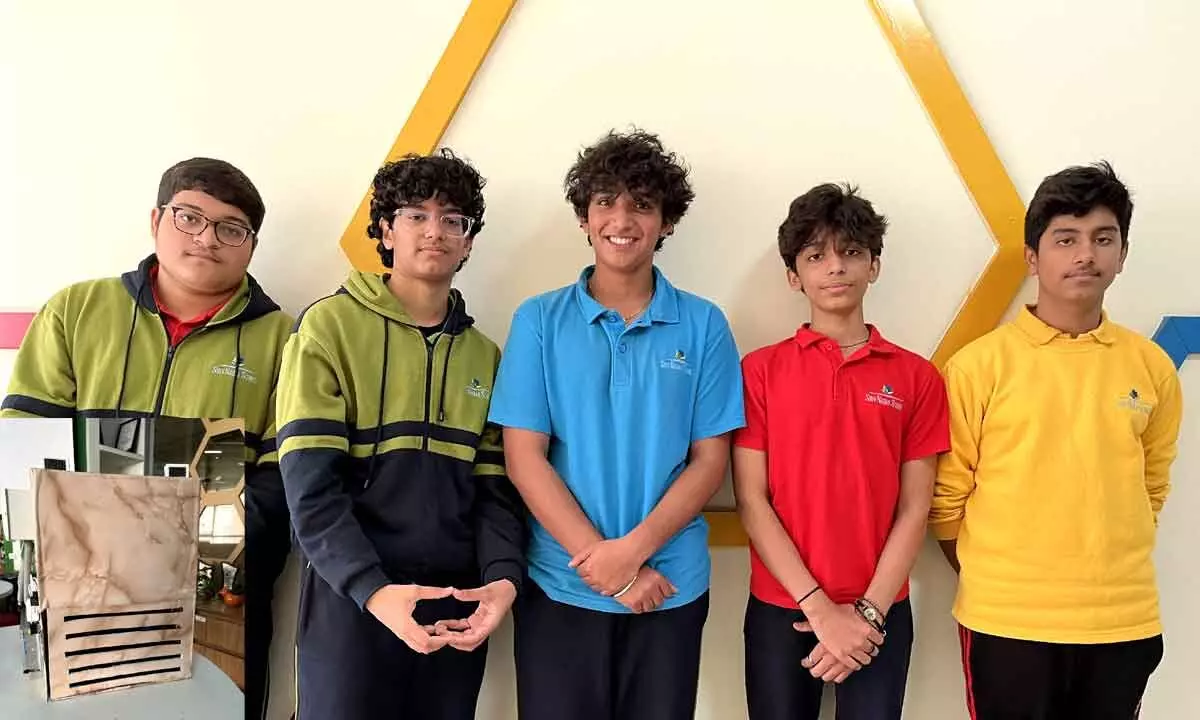Students create eco-friendly cooling device to beat the heat

The device is compact compared to traditional cooling devices while supporting dual air conditioning functionality. The students are also working on making the electric supply based on solar panels meet the power requirements in a self-sufficient way and thereby reducing the overall carbon footprint
Zephyrus works on the principle of the Peltier effect and doesn’t require any cooling agent to create the cooling effect; thus, it could help save tons of water consumed by traditional coolers and reduce the negative environmental impact of refrigerants used in air conditioners
Meet V Sahil Seshadri, Lakshya Goswami, Uday Singh, Sourish Grover, and Armaan Sharma, the students of Shiv Nadar School, Gurugram, have invented an eco-friendly, pocket-friendly, portable device, the ‘Zephyrus’, with dual functionality of a cooler and a heater. This device is meant to provide year-round comfort and specifically designed to cater to people from the underserved socio-economic section. Considering the ongoing heatwave in India, with temperatures soaring above average levels in many regions, the need for a sustainable cooling device becomes even more crucial. It’s heartening to know that the students developed Zephyrus device is eco-friendly, portable, and cost-effective, making it accessible to a broader section of society.
Noticing the severe heat, the students wondered how difficult it is for those who can barely afford any cooling device. “Our first round, where we were to identify a problem, was in peak summer while we were brainstorming ideas to work on. The weather was so hot that even with centralized air conditioning, one would not feel comfortable during the transition to and from open spaces,” the students said.
“This made us wonder how difficult it would be for those who can barely afford a cooling device, let alone such a high-end cooling system,” they added.
The students were concerned about the environmental impact and high cost of the cooling agents available in the market. They spent months ideating and creating the eco-friendly and affordable device. The device’s key components include a Peltier Module, Exhaust Fan, Blower Fan, Aluminum Sheets, and Heat Sink, which facilitate the dual functioning of the product.
The device boasts a cooling system that outperforms its competitors by achieving a lower temperature of 7 degrees Celsius, while other products can achieve temperatures of 4.5, 5.2, and 6.9 degrees Celsius. This impressive performance can be attributed to the unique components integrated into the Zephyrus cooling system. It is specifically designed to achieve superior cooling performance without causing any harm to the environment.
The students are encouraged to ideate and devise economically viable and creative solutions to address real-world problems. It was presented at the school’s annual tech event Colloquium and was assessed by an external jury.
“Zephyrus works on the principle of the Peltier effect and doesn’t require any cooling agent to create the cooling effect; thus, it could help save tons of water consumed by traditional coolers and reduce the negative environmental impact of refrigerants used in air conditioners,” said the students.
The device is compact compared to traditional cooling devices while supporting dual air conditioning functionality. The students are also working on making the electric supply based on solar panels meet the power requirements in a self-sufficient way and thereby reducing the overall carbon footprint.
As part of the school curriculum, Class 10 students need to work in teams to identify and address real-world problems, test the solutions, and present them in the real world.


















